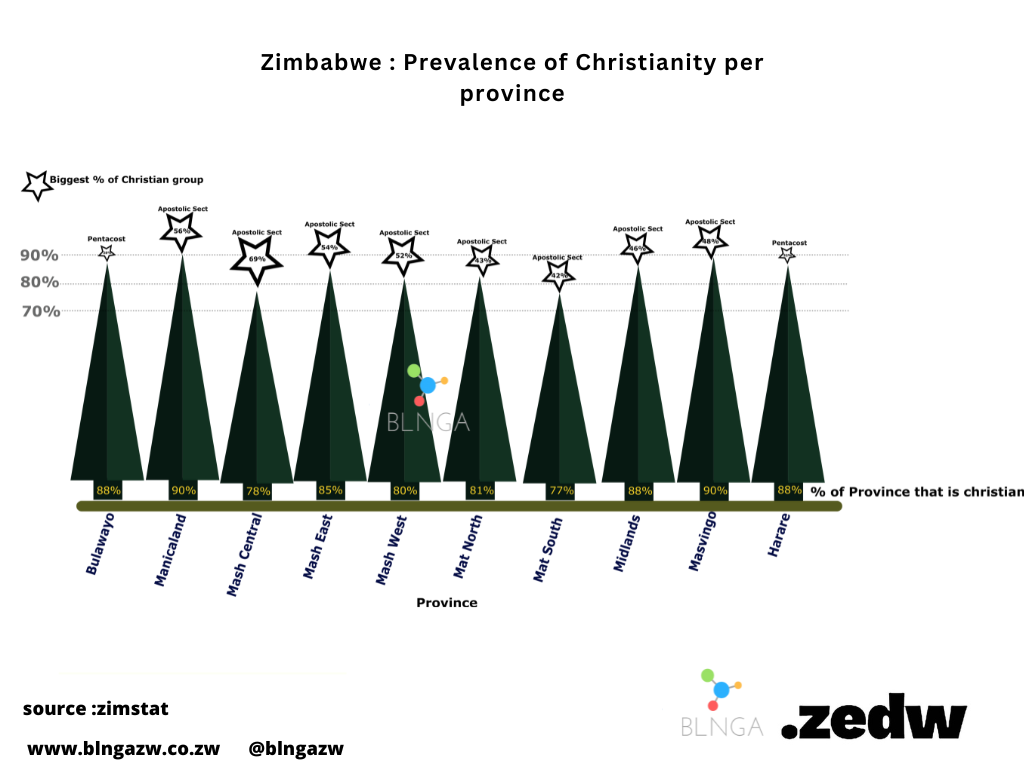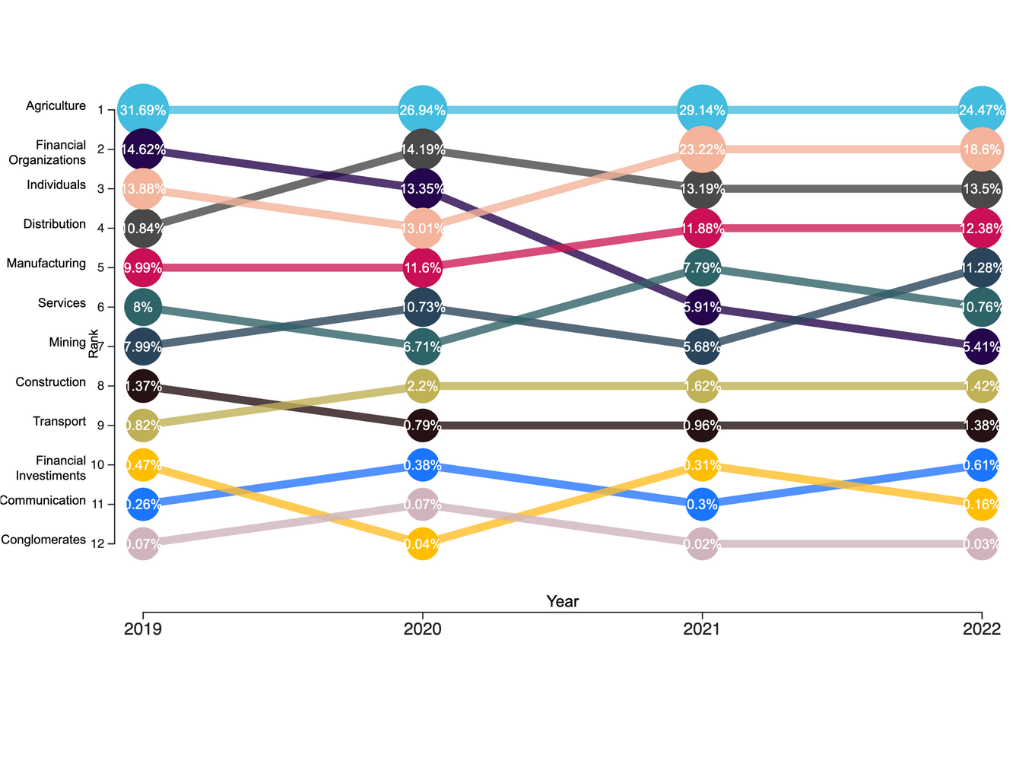Exploring Zimbabwe's Religious Mosaic: An Interactive Journey through Beliefs, Practices, and Cultural Dynamics
In this blog post, we delve into the intricate tapestry of religious diversity across Zimbabwe's 10 provinces. This comprehensive exploration not only unveils the total Christian population in each region but also provides a nuanced understanding of the predominant religious groups, their dynamics, and the unique cultural influences that shape Zimbabwean identity.

1. Bulawayo: Pentecostal Presence (88% Christian)
Highest Percentage Group: Pentecostal (28%)
In Bulawayo, the vibrant Christian community is characterized by a notable Pentecostal presence, comprising 28% of the population. The province stands as a diverse hub where Apostolic Sect, Roman Catholic, and Protestant communities contribute to the rich religious tapestry.
2. Manicaland: Apostolic Stronghold (90% Christian)
Highest Percentage Group: Apostolic Sect (56%)
Nestled in the east, Manicaland emerges as an Apostolic stronghold, with 56% of its population adhering to this tradition. The coexistence of various Christian groups paints a vivid picture of religious harmony in this province.
3. Mashonaland Central: Apostolic Dominance (78% Christian)
Highest Percentage Group: Apostolic Sect (69%)
Mashonaland Central stands out with a remarkable 69% adherence to the Apostolic Sect, reflecting a unique religious landscape. This province showcases the prevalence of indigenous religious traditions in the Christian context.
4. Mashonaland East and West: Apostolic Influence (85% and 80% Christian, respectively)
Mashonaland East:
Highest Percentage Group: Apostolic Sect (54%)
Mashonaland West:
Highest Percentage Group: Apostolic Sect (52%)
The neighboring provinces of Mashonaland East and West showcase the enduring influence of the Apostolic Sect, shaping the religious fabric with a blend of Roman Catholic, Pentecostal, and Protestant traditions.
5. Matabeleland North and South: Apostolic Resilience (81% and 77% Christian, respectively)
Matabeleland North:
Highest Percentage Group: Apostolic Sect (43%)
Matabeleland South:
Highest Percentage Group: Apostolic Sect (42%)
In the vast landscapes of Matabeleland North and South, the Apostolic Sect maintains a resilient presence, blending with diverse Christian denominations and other spiritual traditions.
6. Midlands: Apostolic Diversity (88% Christian)
Highest Percentage Group: Apostolic Sect (46%)
Midlands, positioned at the crossroads, epitomizes religious diversity with a significant Apostolic presence. The province reflects a harmonious coexistence of various Christian denominations.
7. Masvingo: Apostolic Traditions (90% Christian)
Highest Percentage Group: Apostolic Sect (48%)
In the southeast, Masvingo unfolds as a region where Apostolic traditions intertwine seamlessly with Roman Catholic and Protestant influences, creating a unique religious landscape.
8. Harare: Pentecostal Diversity (88% Christian)
Highest Percentage Group: Pentecostal (32%)
As the capital and cultural hub, Harare showcases Pentecostal diversity, with 32% of the population embracing this tradition. The city's religious tapestry reflects a dynamic blend of Apostolic, Roman Catholic, and Protestant traditions.
This interactive exploration of Zimbabwe's religious landscape not only highlights the total Christian population but also unveils the dominant religious groups shaping each province. The rich tapestry of beliefs, practices, and cultural dynamics showcased in the interactive chart invites you to delve deeper into the diverse and evolving spiritual identity of Zimbabwe.

